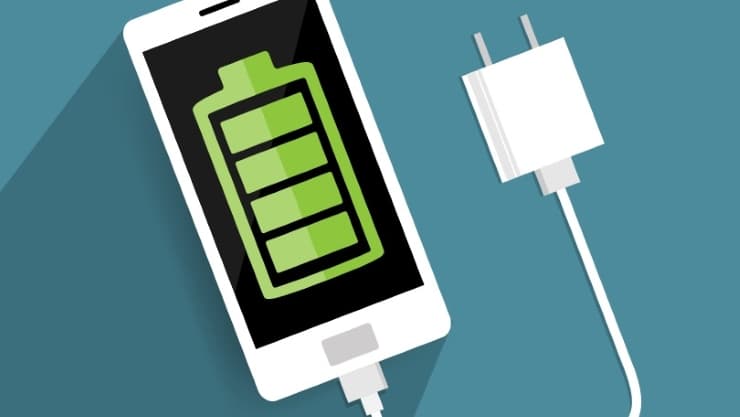New Organic Batteries To Power Up Efficiently Even In Freezing Cold
How far can a battery sustain itself in extreme conditions? This is one of those challenges for which scientific minds are putting all their efforts to find a practical solution where a battery, either that of a smartphone or a car charging source could adapt to environmental changes. Improved Lithium batteries could withstand up to 110 degrees Celsius whereas the new concept of mushroom batteries can run at full swing even at 700 degrees centigrade. These examples are the possible citations where keen interest on energy sources and especially the battery can be seen. Still, there are loop holes and the quest for upgraded energy storing devices is on and running.
Presenting a completely new concept, the Hiroshima University from Japan has come forward with their latest technology which can give power even at freezing conditions. Named as "eco batteryâ€, the portable power source is a rechargeable, non-metallic organic battery, specifically designed to be applied in cold storages or extreme cold environments.

The research team from Hiroshima University has invented an advanced technical pathway to devise organic radical batteries that could give an economical as well as a green solution to the growing problem of exhausted metal mines. Currently, the world is entangled with Lithium-ion batteries as they stand safer with respect to Lithium batteries but both are dependent on the Metal core, having a limited resource. Such technologies require a much needed change so that the rest can be saved from depletion.
According to the source, the bio-inspired battery possesses a voltage level way higher than the contemporary ones and is a simple, yet crucial modification of its predecessor, officially released in the same year. As an aid to the demanding non-renewable sources, the eco battery was optimized to perform better than their metal competitors. These new born devices are available at a cheap price and also features safe-to-handle qualities with long lasting life.
Researchers expressed that their device boasts of a high speed recharging facility which could recharge the same amount in one second, that used to be done in an hour by a conventional one. As a reason, they held chemical energy carrying process responsible for this. Furthermore, the device could make a place inside wearable gadgets as it can be moulded flexibly and could be customized to take on a transparent appearance.
The approach, “new organic radical synthesis method†taken up by Professor Yamamoto was first realized in 1985 and the current modifications have been integral to its development. The current research was published by the Bulletin of the Chemical Society of Japan and wasfunded by the Ministry of Education, Culture, Sports, Science and Technology of Japan.
Source: <a href="https://www.jstage.jst.go.jp/article/bcsj/89/5/89_20160012/_article" target="_blank" rel="nofollow noopener noreferrer">Easy Access to Martin’s Hypervalent Sulfur Anions toward an Electrode Material for Organic Rechargeable Batteries</a> | #-Link-Snipped-#
Presenting a completely new concept, the Hiroshima University from Japan has come forward with their latest technology which can give power even at freezing conditions. Named as "eco batteryâ€, the portable power source is a rechargeable, non-metallic organic battery, specifically designed to be applied in cold storages or extreme cold environments.

The research team from Hiroshima University has invented an advanced technical pathway to devise organic radical batteries that could give an economical as well as a green solution to the growing problem of exhausted metal mines. Currently, the world is entangled with Lithium-ion batteries as they stand safer with respect to Lithium batteries but both are dependent on the Metal core, having a limited resource. Such technologies require a much needed change so that the rest can be saved from depletion.
According to the source, the bio-inspired battery possesses a voltage level way higher than the contemporary ones and is a simple, yet crucial modification of its predecessor, officially released in the same year. As an aid to the demanding non-renewable sources, the eco battery was optimized to perform better than their metal competitors. These new born devices are available at a cheap price and also features safe-to-handle qualities with long lasting life.
Researchers expressed that their device boasts of a high speed recharging facility which could recharge the same amount in one second, that used to be done in an hour by a conventional one. As a reason, they held chemical energy carrying process responsible for this. Furthermore, the device could make a place inside wearable gadgets as it can be moulded flexibly and could be customized to take on a transparent appearance.
The approach, “new organic radical synthesis method†taken up by Professor Yamamoto was first realized in 1985 and the current modifications have been integral to its development. The current research was published by the Bulletin of the Chemical Society of Japan and wasfunded by the Ministry of Education, Culture, Sports, Science and Technology of Japan.
Source: <a href="https://www.jstage.jst.go.jp/article/bcsj/89/5/89_20160012/_article" target="_blank" rel="nofollow noopener noreferrer">Easy Access to Martin’s Hypervalent Sulfur Anions toward an Electrode Material for Organic Rechargeable Batteries</a> | #-Link-Snipped-#
0
